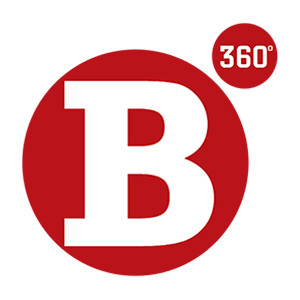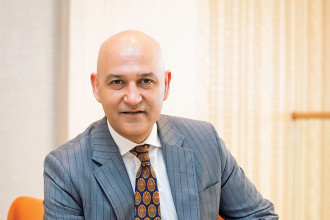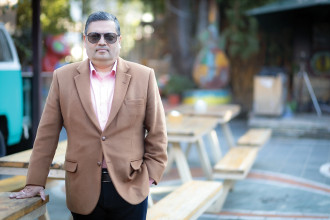-1709876854.jpg)
Christopher Armes
Master Blender, Cask Series - Khukri Rum
Christopher Armes, Master Blender of Cask Series at Khukri Rum, has been working in alcoholic beverages since 1982 when he joined Grand Metropolitan. While at Grand Metropolitan, he undertook various roles where he was involved in launching two cognac brands and varietal wines. Armes, later, joined Diageo as the project support director where he played a global support role, managing the central laboratories and pilot plant within the United Kingdom. Over the years, Armes went on to become the Technical Director for Innovation looking after product innovation and process development.
It has been five years since he has been associated with Khukri Rum ensuring that the product stands true to the iconic brand position it holds. Khukri Rum is produced by The Nepal Distilleries and has captured the taste and imagination of people across the country since 1959. It is also available and appreciated globally by rum connoisseurs who vouch for its distinct taste.
Khukri Rum is soon launching a Cask Series which will be limited in supply that is generating some attention and anticipation among rum and single malt whisky drinkers. So, while Christopher Armes was recently in Kathmandu, Business 360 caught up with him to learn about his association with Khukri Rum, the limited-edition cask series and his views on the wider alco-beverage sector. Excerpts:
What are some special skills that a blender must have?
It is the ability to remember taste. Obviously, you have to have the ability to taste and describe. And I think it is the ability to link taste preference to consumer liking. One of the biggest difficulties is that I have my taste preferences and consumers will have their taste preferences and they may not necessarily be the same. So, it is about removing that innate personal bias around it. The best descriptor that I can have is a term used which is called smooth. One man’s smoothness is another man’s harshness. And my description of smooth is different to other people’s definition of smooth. So, trying to understand your own personal bias and consumer bias is a challenge. Hence, remaining neutral about your own personal preferences is important.
I think having had an understanding of taste preferences across markets has been helpful for me. When I was working for Diageo, I was lucky enough to experience products in China, India, Australia. Understanding the differences between what people would like and dislike is really important. So, it is about being commercially aware of what you are doing blend wise.
How do you actually ascertain the taste preferences of the people?
It might sound awful but the basic level is about just going into local bars and drinking more local products. But also, when you do market research, experimenting with blends gives you an opportunity to try out new ideas, new blends which stretch consumer exposure to different types of products. So, when I do market research on new blends, I will deliberately put blends which have got more of one character or less of a character to see how consumers react. However, consumers are not great at telling you what they like about products. They are just good at telling you whether they like something or dislike it. So, creating a stretch of liquids enables me to determine what people like and dislike in product types.
How long have you been associated with Khukri Rum and what do you think distinguishes Khukri Rum from other spirits?
I have been associated with Khukri Rum for five years. While talking about Khukri Rum, there is an interesting blend of characters within Khukri that I do not see in other blends. There is a subtle blend of rums, fruitiness and harshness, balanced off with what I call dried fruits like prunes, raisins and sultanas. There is also a nice caramel note that you get from molasses. This is new and a unique taste profile in its own right. Part of that is just because of the raw materials used in Nepal.
In reality, the Khukri Rum blend was developed 63 years ago and I have nothing to do with it. There is a nice combination of pungency and dried fruits and smoothness and sweetness that you do not see in a lot of Caribbean rums.
What factors make a high-quality rum and does Khukri meet those standards?
What factors make a high-quality rum is an impossible question to answer because high quality is determined by what you like and what you do not like. Most people will say that high quality means complex, a relatively rounded flavour profile, one that does not jump out at you. When I am judging a product profile, I would say, ‘does it deliver up front’. Is the first taste nice? Is the last taste nice? And is there a contact between the first and last taste? For me, Khukri Rum delivers on that front. It is not going to be everybody’s taste but it delivers premium cues in terms of how it delivers a profile.
You mentioned earlier about Caribbean rums. So, is the blending process different for different types of rums?
It is the distillation process that is different for different rums. There are pot stills and continuous stills and you have got what’s known as thumpers where they put condensed liquids and redistill it. So, there are different processes for rums and you can see that on Caribbean rums whereby you have light Caribbean rums and heavy Caribbean rums which are made in a very different way. Heavy Caribbean rums are done more by pot stills and the light ones by continuous stills. Khukri Rum is somewhere in the middle.
In these five years of association with Khukri Rum how do you think has its taste evolved?
The taste of Khukri Rum has not evolved at all. What we have made sure is that it is a consistently good quality rum. The quality of the rum is the same as it was when I joined.
Khukri Rum is about to introduce special limited edition. Could you please tell us about it?
That was in my brief when I was brought in to help with Khukri. When I spoke to the owner, we had a conversation that revolved around how do we bring a more premium and luxury feel to Khukri Rum. How do we bring premium variants to Khukri Rum. The early days were about how do we bring cask maturation or cask finishing to Khukri Rum and this is the first edition of those experiments. We started off with a range of different cask variants, some of them closer in, some of them further out. So, we have got shorea robusta casks, charred and uncharred. Charred means you burn inside and create charcoal on the inside, and in uncharred, you do not do that. We have used European oak casks and I have been coming back for the last five years tasting those rums down. I have been coming back every so often over the last five years tasting them and identifying when is the right time to take the liquid out of the cask and bottle it. And this is the first one.
-1709876854.jpg)
It is said that the process of rum undergoing ageing isn’t entirely consistent? The same rum put in two ‘identical’ casks can yield very different rums years later. What are the skill levels required to adjust each batch’s blend?
That is the same with any age spirit. Each cask can be different. So, you have to have a number of casks and then part of my role is to taste each and every cask on a regular basis. And then we sit around and say, these casks are suitable and these are not. If they are not suitable, then it means they need to be normally aged for longer. We have selected a certain number of casks which have the right character that I believe are ready to drink now. The rest of the casks are sitting in the warehouse waiting for another day. The whiskey people do exactly the same thing, so it is not just with rum. That is the skill of what we do.
If it was as easy as to put in one cask site and say we have got 20 casks and at the end of five years all 20 casks are the same, then I would not have a job. So, my job is to make sure that we take all the casks that are consistent within a broad parameter of things and then say those ones are ready and those are not. And every now and then you get one cask that is much better than the rest of them and then you cannot say that this cask is so good we will do this as a single cask addition.
When making the casks how do you decide on the wood to be used?
That is where we have the experimentation. I have a minimum number of casks I believe are right to make a decision on. And we have laid down shorea robusta casks, charred and uncharred first. Then we lay down some oak casks, European oak casks, other casks like bourbon casks, sherry casks, a whole raft of different types of casks, all of which we will look at in two, three or, four years’ time to see which ones are appropriate for release. Every distillery will go through the same process. All the Caribbean rums have had a head start on us, so they know whether bourbon casks or sherry casks work for them. So most Caribbean rums are aged in bourbon casks because that gives a sweetness from bourbon. A lot of whiskey casks are sherry casks because the sherry gives sweetness. Khukri is a different rum, so its interaction with the cask will be different. The climate here is different, so the temperature range is different, it is cold and hot. The humidity is different. So, all those parameters mean the rum ages in a different way. So, whilst we can take learnings from other countries, we still have to go through the learning experience of a smaller number of casks and then see how they work. There may be some experiments that never see the light of day.
Ageing rum is a complex process to master; what are some of the things that you look at?
I primarily look into taste. Does the wood act in a positive way and does the climate act in a positive way? There are two types of reactions that happen with maturation. One is called additive and that is the wood impact on the rum. So, when you taste woody notes from the cask that is additive. Then there are subtractive reactions which are oxidation and evaporation. Oxidation and evaporation are determined by the climate or the environment that you are maturing the rum in.
In the Caribbean the temperature never gets down to six and seven degrees but in Nepal it does. So, in Nepal you get a much wider range of temperature difference. As a consequence, the maturation process in the negative and the positive is different. It is the same in India. For example, in India the temperature is consistently higher, so it matures quicker than it would do in Nepal. Sometimes it is a benefit and sometimes it is not. You only know by trying.
How do you view the popularity of rum growing in the days ahead? What are some trends in rum drinking we can look forward to?
Rum is becoming increasingly popular globally; that is one trend. Premiumisation is another trend. People are drinking more premium rums, more unique rums. So, for me, Khukri Rum has an opportunity for the export market, the international market because it is uniquely Nepali and it has a unique profile, so it fits one major trend. The cask editions will only enhance the reputation of rum from Nepal.
Can we expect something novel for Khukri Rum from you in the near future?
Primarily, we are experimenting on cask editions. So, there will be new editions coming out, either primary maturation or secondary maturation. By primary, I mean fresh virgin casks, secondary casks are refill. Each behave in a slightly different way. Beyond that, I cannot divulge more.
Anything that you would like to add?
With the limited edition we have got with the shorea robusta casks that are charred, I think people will be surprised at the impact the wood has on the final delivery of the flavour profile; how it makes it much more complex and how it makes it much more accessible. I believe it is going to appeal much more to the international market over and above the current range of Khukri. I don’t know what price points they are looking at, but for me at least, I think it is a really premium addition to the Khukri family.



-1744694423.jpg)

-1738128188.jpg)
